Pre-Confederation Flags
The official flag of Newfoundland and Labrador is also one of its most recent. Designed by local artist Christopher Pratt in 1980 and adopted by the provincial government that same year, it was flown for the first time on 24 June 1980. Long before then, several British-derived flags represented Newfoundland and Labrador.
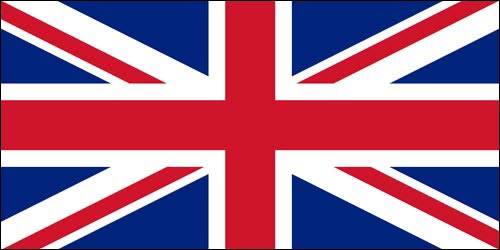
The earliest was the Union Jack, the traditional flag of all British colonies. After 1870, Newfoundland governors flew the Union Jack with an identifying emblem in its centre, while government vessels flew a blue ensign with the same emblem in its fly (the area near the centre right edge of a flag). After 1904, Newfoundland's official badge was inserted into its red ensign, a flag flown by merchant vessels to denote nationality. The red ensign grew in popularity as a land flag, although it never surpassed the Union Jack, which the House of Assembly adopted as the colony's official flag in 1931. It remained the official flag of Newfoundland and Labrador until 1980.
Flags of the Governor
The British government appointed governors to its overseas colonies to represent the Crown. Most governors, including Newfoundland's, would have flown the Union Jack as their identifying flags, although some appear to have used other flags instead; however, documentation concerning the period before the 1870s is scarce.
In 1862, the Corrected Code of Merchant's Signals reported that a white flag divided in four equal parts by a red cross bearing a Royal Crown in its centre flew over Government House in St. John's. The Governor of New South Wales also flew a similar flag.
In 1870, the Colonial Office and the Admiralty approved a series of new flags for colonial governors, known as 'defaced' Union Jacks. In heraldry and vexillology (the study of flags), a flag is 'defaced' when a coat of arms, badge, or other official emblem has been added to its design; the term carries no negative connotations. On 18 September 1870, Newfoundland adopted a defaced Union Jack which had at its centre a white disc encircled by laurel leaves; inside was a royal crown with the words TERRA NOVA written below.
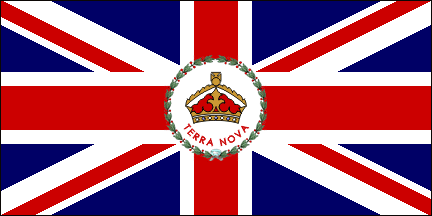
This remained the official flag of all Newfoundland governors until 1904, when Governor Sir Charles Cavendish Boyle submitted a new design to the Secretary of State for the Colonies. Instead of the royal crown, the new flag used a badge derived from the colony's Great Seal and designed by Boyle's niece, Adelaide Lane.
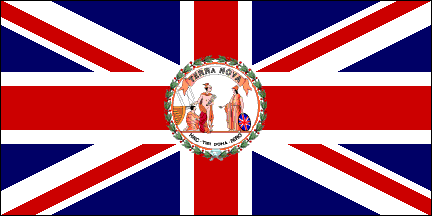
The circular laurel-leaf frame remained unaltered, but inside was an illustration of a fisher (representing Newfoundland) being presented to the goddess Britannia by Mercury, the Roman god of commerce. At the top were the words “Terra Nova” and near the bottom the Latin motto “Haec Tibi Dona Fero,” meaning “These gifts I bring to thee.” This remained the flag of all Newfoundland governors and lieutenant governors until 1975.
Red and Blue Ensigns
British ensigns are flags that display a Union Jack in the top left corner of a larger red, white, or blue flag. They date back to the early17th century and, until 1864, represented the three different squadrons of the Royal Navy. In the 1860s, the British government reorganized the fleet, and reassigned the ensigns: white to the Royal Navy, blue to ships in the public service or the Royal Naval Reserve, and red to merchant shipping. All colonial government vessels were to fly a defaced blue ensign containing in its fly an emblem unique to each colony. Newfoundland's blue ensign used the same badge as the governor's flag – a crown until 1904, and then the fisher-Mercury-Britannia badge.
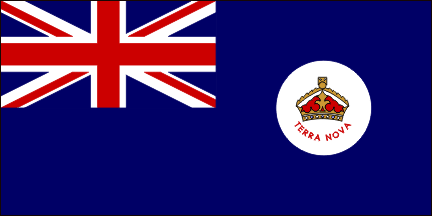
In 1889, the Merchant Shipping (Colours) Act allowed the colonies to fly distinguishing flags on their merchant vessels. In the coming years, many colonies adopted modified red ensigns containing coats of arms or other distinctive emblems in the fly.
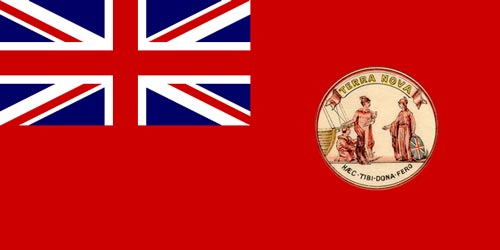
In 1904, Newfoundland inserted into its red ensign the same badge that appeared on its blue ensign and governor's flag, making it the colony's official civil ensign – a flag flown from civil ships (passenger, cargo, and other non-military vessels) to denote nationality. Although the flag had no official status on land, it was flown from many buildings, including some Labrador trading posts and mission stations, as well as at parades and other public events.
The Union Jack
On 15 May 1931, the Newfoundland legislature passed the National Flag Act and made the Union Jack (also known as the Union Flag) the colony's official flag. Already the traditional land flag of all British colonies, the Union Jack had taken on much more potent meaning after the First World War as a symbol of respect to the Newfoundland and Labrador volunteers who fought and died under it overseas.
The Act also stated that the governor's flag would remain a Union Jack with the identifying badge in its centre, and reaffirmed that the defaced blue and red ensigns were the official flags of all government and merchant vessels, respectively.
The Union Jack remained the official flag of Newfoundland and Labrador until 1980, when it was replaced by the current provincial flag. Many public and private buildings continue to fly the Union Jack alongside the provincial and Canadian flags as a symbol of the province's links with the Commonwealth and historical ties to Britain.




